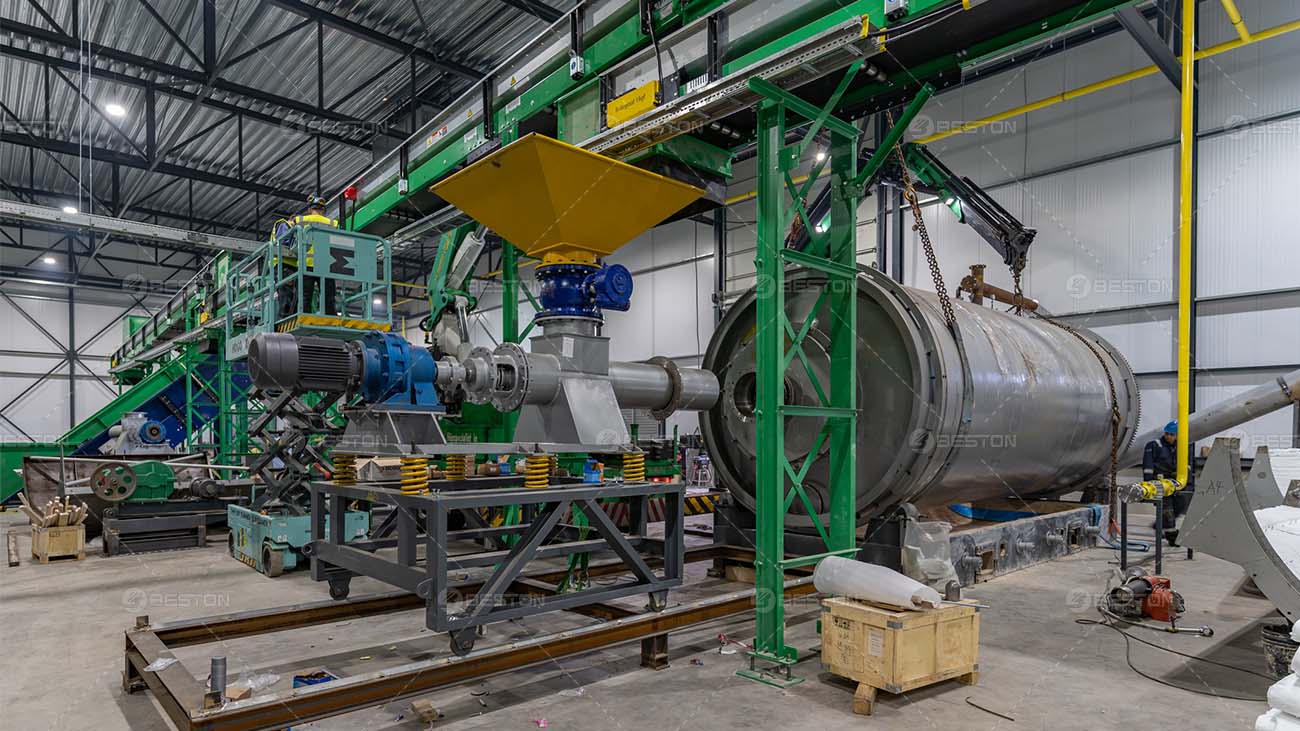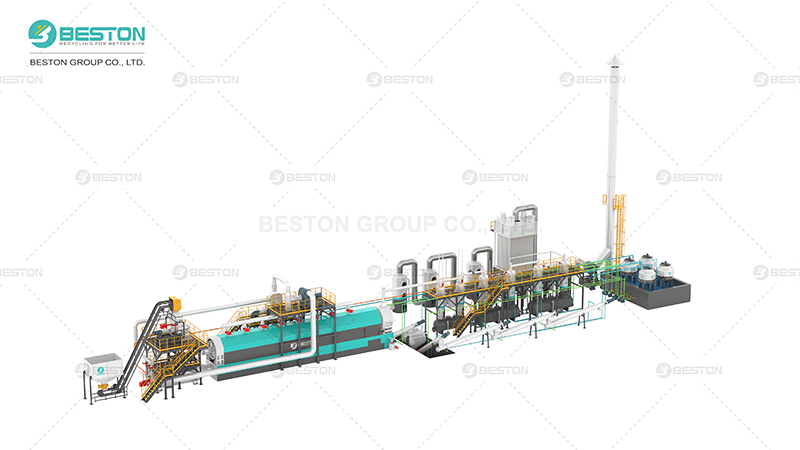Plastic pollution is an escalating crisis that threatens global ecosystems, wildlife, and human health. As conventional recycling methods struggle to keep pace with the increasing volumes of plastic waste, innovative technologies are emerging as crucial solutions. One such technology is pyrolysis, which offers a sustainable approach to plastic recycling. This article explores how a plastic pyrolysis plant operates, its benefits, and its role in advancing sustainable plastic waste management.
Understanding Plastic Pyrolysis
Plastic pyrolysis is a thermal decomposition process that occurs in the absence of oxygen. It involves heating plastic waste to high temperatures, breaking down the material into simpler chemical compounds. The result is the production of valuable byproducts, including pyrolysis oil, gas, and char, each of which has potential applications in various industries.
The Pyrolysis Process
The plastic pyrolysis process typically follows these stages:
- Feedstock Preparation: Plastic waste is first sorted and shredded to ensure uniformity in size. This preparation step is crucial for achieving consistent results during pyrolysis. The shredded plastic is then fed into the pyrolysis reactor.
- Pyrolysis Reaction: Inside the reactor, the plastic is heated to temperatures typically ranging from 300°C to 600°C. This thermal decomposition occurs in an oxygen-free environment, preventing combustion and allowing for the efficient breakdown of plastic polymers into smaller molecules.
- Product Collection: As the plastic decomposes, it produces several byproducts:
- Pyrolysis Oil: This liquid byproduct is a complex mixture of hydrocarbons and can be used as an alternative fuel or further refined into various chemicals.
- Gaseous Byproducts: The gases produced, including methane, ethylene, and propane, can be captured and used as fuel to power the pyrolysis plant or other industrial processes.
- Char: The solid residue, often referred to as char or carbon black, can be used in applications such as reinforcing materials or as a pigment.
- Condensation and Separation: The gases are cooled and condensed in a condensation system to separate the pyrolysis oil from the gaseous byproducts. This step ensures that the oil is collected efficiently and is free from contaminants.
Benefits of Plastic Pyrolysis
Plastic pyrolysis offers several advantages over traditional plastic recycling methods, including:
1. Versatility in Feedstock
Plastic pyrolysis can handle a wide variety of plastic types, including those that are difficult to process through conventional recycling methods. Unlike mechanical recycling, which often requires plastics to be sorted by type and color, pyrolysis can process mixed plastic waste effectively. If you have any questions about the suitability of raw materials, please contact Beston Group Co., Ltd.
2. Reduction in Plastic Waste Volume
Pyrolysis significantly reduces the volume of plastic waste by converting it into valuable byproducts. This reduction alleviates the pressure on landfills and minimizes environmental contamination from plastic waste.
3. Resource Recovery
The byproducts of pyrolysis—pyrolysis oil, gas, and char—have considerable economic value. Pyrolysis oil can be used as an alternative fuel or chemical feedstock, while the gases can be utilized to power the plant or other industrial processes. Carbon black, derived from the char, can be used in various industrial applications, such as in the production of tires and as a pigment.
4. Energy Efficiency
The plastic to fuel machine often incorporate energy recovery systems that use the captured gases as a fuel source, improving the overall energy efficiency of the process. This integration reduces the need for external energy inputs and lowers operational costs.
5. Environmental Benefits
Pyrolysis helps mitigate the environmental impact of plastic waste by reducing landfill use and lowering the emissions associated with plastic degradation. Furthermore, the process is conducted in a controlled environment, minimizing the risk of harmful emissions and ensuring compliance with environmental regulations.

The Role of Plastic Pyrolysis Plants
Plastic pyrolysis plants are pivotal in scaling up the use of pyrolysis technology for plastic waste management. These facilities are designed to handle large volumes of plastic waste and operate continuously, providing a sustainable solution for recycling. Key aspects of plastic pyrolysis plants include:
1. Continuous Operation
A fully continuous plastic pyrolysis plant can process plastic waste around the clock, ensuring a steady output of byproducts. This continuous operation is essential for managing large-scale plastic waste and meeting recycling demands.
2. Advanced Control Systems
Modern plastic to oil machine is equipped with sophisticated control and monitoring systems that ensure optimal performance and safety. These systems regulate temperature, pressure, and feedstock flow, allowing for precise control over the pyrolysis process.
3. Integration with Waste Management Systems
Plastic pyrolysis plants can be integrated into existing waste management systems, providing a complementary solution to conventional recycling and waste disposal methods. This integration enhances the overall efficiency of waste processing and contributes to a circular economy.
4. Research and Development
Ongoing research and development efforts are focused on improving the efficiency and scalability of plastic pyrolysis technology. Innovations in reactor design, feedstock preparation, and byproduct utilization are advancing the capabilities of plastic pyrolysis plants and expanding their potential applications.
Challenges and Considerations
Despite its advantages, plastic pyrolysis faces several challenges that must be addressed to maximize its effectiveness:
1. Capital Investment
The initial capital investment required for setting up a plastic pyrolysis plant can be substantial. Costs include equipment, infrastructure, and technology, which can be a barrier to entry for some operators.
2. Technical Complexity
The operation of a plastic pyrolysis plant involves complex technical processes that require skilled personnel to manage. Ensuring consistent and efficient operation requires expertise in reactor management, control systems, and byproduct handling.
3. Market Demand
The economic viability of plastic pyrolysis plants depends on the market demand for the byproducts, including pyrolysis oil, carbon black, and gases. Fluctuations in market conditions can impact the profitability of the plant and its ability to operate sustainably.
4. Environmental Management
Proper management of emissions and waste is crucial to minimize the environmental impact of pyrolysis. Advanced filtration and treatment systems are necessary to ensure that the process complies with environmental regulations and minimizes potential pollutants.

Conclusion
Pyrolysis technology offers a promising solution for sustainable plastic recycling by converting plastic waste into valuable byproducts. A plastic pyrolysis plant plays a critical role in implementing this technology on a large scale, providing an efficient and environmentally friendly approach to managing plastic waste. Despite challenges related to capital investment, technical complexity, and market demand, the benefits of plastic pyrolysis—including versatility in feedstock, resource recovery, and environmental impact reduction—make it a key component of future waste management strategies. As technology continues to advance and research progresses, the potential for plastic pyrolysis to contribute to a circular economy and sustainable waste management will only grow.